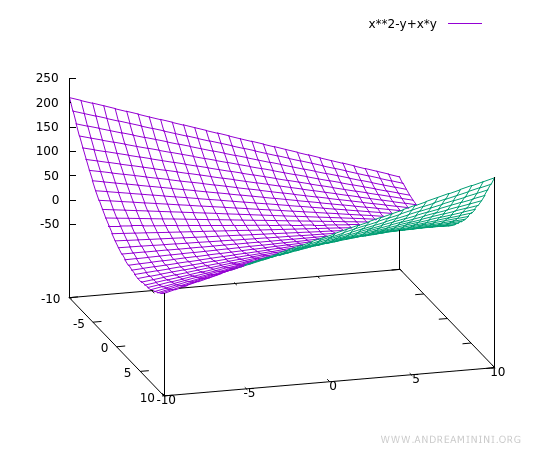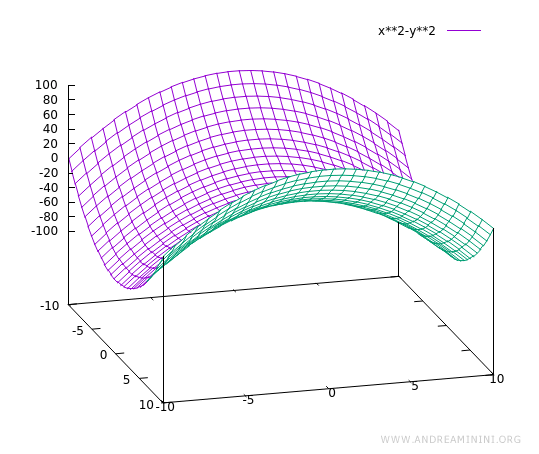Graph of the Functions of Two or More Variables
What Are Multivariable Functions?
Functions of two or more variables involve multiple independent inputs. f:Rn→R
The output can be a single real value (R), an ordered pair (R2), or an m-tuple of real values (Rm).
f:Rn→Rm
Illustrative Examples
Example 1
Consider a function of two real variables:
f:R2→R
One such example is:
f(x,y)=x2−y+xy
Note. The independent variables can also be written as components of a vector, with x1 and x2 representing the first and second components respectively: f(x1,x2)=x21−x2+x1x2
Below is the graph of the function in three-dimensional space, with axes x, y, and f(x, y):

Example 2
Another function of two real variables:
f:R2→R
is defined as:
f(x,y)=x2−y2
Here is its graph in the three-dimensional space (x, y, f(x, y)):

Example 3
Now consider a function of three real variables:
f:R3→R
defined as:
f(x,y,z)=x2+z2+yz
Note. A function may be defined over multiple variables without necessarily using all of them in its expression. For instance, the function below is still a function of three variables, even though only x and y appear explicitly: f(x,y,z)=x2+y2
In this case, the graph cannot be visualized, as it resides in four-dimensional space: x, y, z, and f(x, y, z).
The Graph of a Function of Two Variables
The graph of a function f:A→R, where A⊆R2, is the set of all points (x,y,z)∈R3 such that (x,y) lies in the domain Df, and z=f(x,y).
graph={(x,y,z)∈R3∣(x,y)∈Df, z=f(x,y)}
Here, R3 is the Cartesian product R×R×R of the variables x, y, and z.
Note. For a function of a single variable, the graph is a curve in the plane: graph={(x,y)∈R2∣x∈Df, y=f(x)} For a function of two variables, z=f(x,y), the graph becomes a surface in three-dimensional space: graph={(x,y,z)∈R3∣(x,y)∈Df, z=f(x,y)}
In general, the graph of a function of n variables is a subset of Rn+1 and is defined as follows:
graph={(→x,y)∈Rn+1∣→x∈Df, y=f(→x)}
Here, →x is a vector with n components, and y is a real number.
→x=(x1,x2,…,xn)
Note. This notation closely mirrors the one-variable case, y=f(x), where x is a real number: graph={(x,y)∈R2∣x∈Df, y=f(x)} In a multivariable context, however, x becomes a vector in Rn: graph={(→x,y)∈Rn+1∣→x∈Df, y=f(→x)}
And so on.
